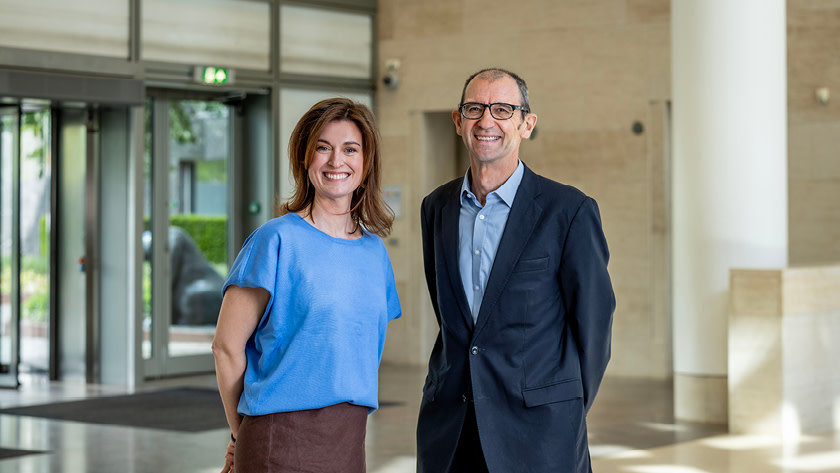Human Rights Conference: how remedy mechanisms help identify and resolve abuses

- Sustainable banking newsletter
ABN AMRO believes that many more companies should be making it easier to report human rights violations. A grievance mechanism aimed at facilitating dialogue and remedying the situation can make all the difference. That was the focus of the recent ABN AMRO Human Rights Conference, where the bank and other organisations shared practical insights and lessons learned.
How do you ensure your human rights policy is properly implemented? In part, by getting the reporting process right. A human rights remedy mechanism can bring parties together to explore solutions. This is an important topic where there is still much room for improvement, explains Maartje van Aardenne, ABN AMRO’s Head Social Impact & Human Rights team. Maartje says that’s why the mechanism was one of the main themes presented at the conference. “It’s an area where businesses can learn a lot from one another,” says Phil Bloomer, Executive Director of the UK-based Business & Human Rights Resource Centre. He closely follows around grievance mechanisms implemented by businesses and was one of the keynote speakers at the event.
Why did ABN AMRO organise a conference on this topic?
Maartje: “At ABN AMRO, we believe that respecting human rights is integral to responsible business. Failing to implement policies or address abuses properly can not only cause irreversible harm to individuals, but can also pose financial and reputational risks to businesses and companies. While many organisations have adopted human rights policies, there are often big gaps between policy and practice. We want to help change that, for example by sharing our experiences at the conference. This helps companies and financial institutions to set up or improve their own grievance and remedy mechanisms.”
Phil: “These mechanisms are important because no matter how well intentioned a particular company may be, things can always go wrong. A grievance mechanism enables swift remediation and demonstrates that the company is taking its social role seriously. Without it, companies risk losing public support and trust.”
For many companies, implementing a mechanism is uncharted territory. ABN AMRO launched a back in October. What insights did the bank share at the conference?
Maartje: “ABN AMRO’s Human Rights Remedy Mechanism is all about simplifying the reporting of human rights violations by its business clients. Our aim is to bring the relevant parties together to find solutions. One key insight we share with other organisations is not to be afraid of complaints from people whose human rights may have been violated. As Phil noted, we all make mistakes. It’s how we remedy them that matters. A formal mechanism helps flag problems at an early stage. Another key to success is dialogue between equals. The first step towards a solution is always really listening to one another.”
All the conference speakers agreed that leadership buy-in is essential for preventing human rights violations.
Phil: “Without top-down support of effective human rights policies, the risk of abuses throughout the supply chain increases. Especially when employees and other stakeholders have no access to a grievance mechanism or other legal recourse. Some CEOs say, ‘We’re only indirectly involved,’ but social responsibility is ultimately seen as lying with them.”
Keynote speaker Mauricio Lazala, Chief of the ’s Business and Human Rights Section, said at the conference, “There’s no such thing as indirect involvement when it comes to human rights.”
Phil: “Grievance mechanisms help to inform companies and investors about what’s happening in the supply chain. The purchasing practices of large companies can trigger human rights abuses at the start of the chain. For instance, if the head office rewards buyers for squeezing prices that are already low. You can just imagine the effect that has on the pressure and working conditions in distant countries where manufacturing takes place.”
Maartje: “The participants heard from Jesús Javier Thomas González, President of the Bajío Sahuaro Foundation. His story is an excellent case in point. He and members of the Ejido El Bajío agricultural collective are battling a listed gold mining company that is devastating local flora and fauna in Mexico’s Gran Desierto de Altar. The experiences he shared underscore the importance of facilitating dialogue.”
Are organisations sufficiently prioritising human rights violations?
Maartje: “Conference participants included a number of ABN AMRO’s business clients, other financial institutions, investors, NGOs and rating agencies such as Morningstar. It’s a solid foundation we look forward to building on, together with our clients and other financial institutions. Representatives from AMFORI [an international organisation that supports companies in improving sustainability in their supply chains, ed.], Oxfam and the development bank FMO, which launched its own grievance mechanism in 2014, also attended.”
Phil: “It’s great to see that big, successful companies like Cisco and Samsung operating in the traditionally high-risk ICT sector have robust human rights policies and offer effective access to remedy and redress. At the same time, it’s clear that much remains to be done. Over 60% of all the companies in our Business & Human Rights Resource Centre benchmark score a zero on access to grievance mechanisms.”
What advice would you give to companies looking to build or improve their mechanism?
Maartje: “Adopt a clear, step-by-step process. That makes it clear to people exactly where they are in that process and what to expect at every stage.”
Phil: “Effectiveness should be baked in at the design stage. Right from the start, involve the people who are most likely to need access to the mechanism. These could be production workers or leaders of indigenous communities. They know where obstacles around human rights lie.”
Maartje: “When you’re setting up a remedy mechanism, draw on the experience of other organisations, such as ABN AMRO. We are happy to help clients design or improve their own mechanisms.”